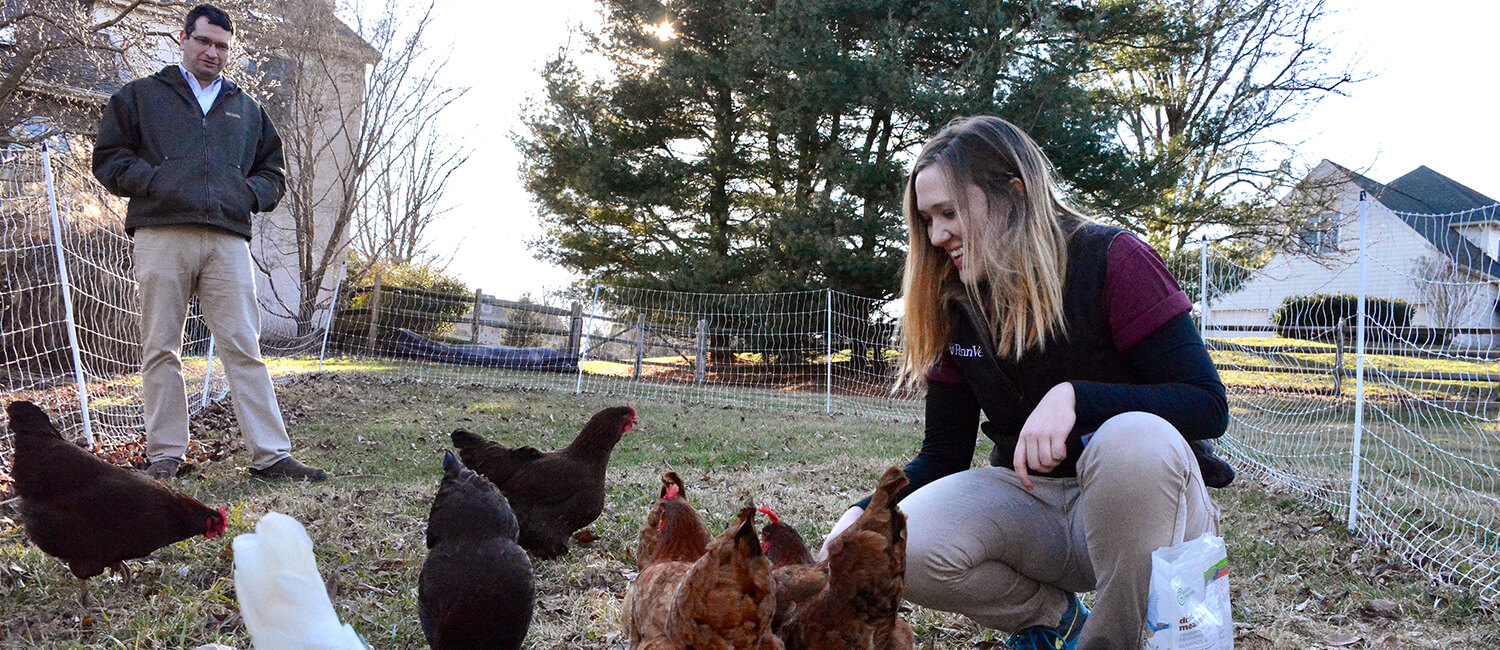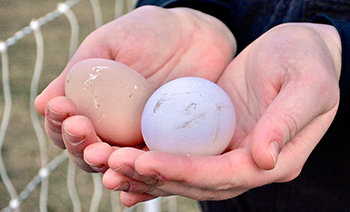 Linnea Tracy, V’19, observes chickens in Dr. David Levine’s backyard flock. She hopes to use her Penn Vet education to shape
Linnea Tracy, V’19, observes chickens in Dr. David Levine’s backyard flock. She hopes to use her Penn Vet education to shape
public policy and positively influence food security.
Linnea Tracy, V'19, decided on a career in veterinary medicine while volunteering with a local animal shelter as a teen and during college summer breaks. This shelter experience and an introduction to epidemiology in undergraduate school sparked Tracy’s plan to focus on population and global health.
Tracy also contacted Dr. Sherrill Davison, Associate Professor, Avian Medicine and Pathology, at New Bolton Center, about working in Davison’s avian lab. “I was looking for a way to incorporate population health and veterinary medicine in a public health domain,” said Tracy.
Over the summer of 2016, Tracy worked with poultry and helped Davison on a retrospective study of bald eagle mortality. “Before this, I had only ever interacted with parakeets,” said Tracy, who was “hooked on birds” after working in Davison’s lab.

For the fourth-year student, avian medicine is the perfect confluence of research, clinical care, and public health, and it’s a largely unexplored science. Relative to mammals, little is known about birds. “Most research is in mammalian species, but birds are very important to us economically, culturally, and personally,” she said.
To help change that, Tracy is currently contributing to studies out of the UC Davis College of Agricultural and Environmental Sciences on how to improve the lives of egg-laying chickens. As the egg industry’s approach to egg production transitions from caged to cage-free, the number of hens with keel bone damage is increasing. The research is exploring how to more accurately assess and prevent keel damage in ways that are less invasive for the animal and more sustainable for the farmer.
When she graduates, Tracy plans to pursue a residency in aviation medicine and hopes to eventually work for a state or the U.S. Department of Agriculture.
“Avian health touches many lives,” she said. “We can impact thousands of birds a day with good medicine. At the same time, we can help owners maintain an income, support a state’s agricultural industry, and promote food and economic security. This is a huge field, and it’s only going to get more important as global food demands grow.”